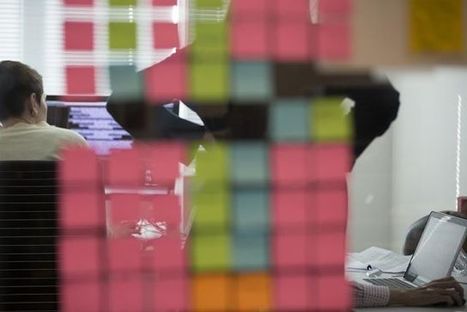Que doivent savoir les étudiants du 21e siècle ?
A défaut d’avoir les ressources en interne, les universités peuvent nouer des partenariats. C’est ce que fait, par exemple, Paris 3 – Sorbonne nouvelle avec Talent Campus, un organisme de formation né dans le cadre des Investissements d’avenir et qui s’attache à développer les compétences sociales : esprit d’équipe, confiance en soi, leadership ou encore créativité.
Savoir apprendre, savoir-faire, savoir-être : voilà les trois facettes de ce que j’appelle un « enseignement total », expression qui fait référence au concept d’ « éducation totale » développé par Nathalie Mons, Marie Duru-Bellat et Yannick Savina.
Cet enseignement dépasse le cadre des disciplines académiques pour se connecter et interagir davantage avec les autres acteurs de la société, notamment les entreprises. Ce modèle aujourd’hui est plutôt celui des pays du Nord et de la Grande-Bretagne.
La France, où traditionnellement les savoirs académiques priment, doit pleinement s’engager dans cette voie si elle veut former des citoyens éclairés, capables de vivre et de créer de la valeur dans notre société de la connaissance. Et c’est la mission de l’université du 21e siècle de montrer le chemin.
Learn more / En savoir plus / Mehr erfahren:
https://gustmees.wordpress.com/2015/05/26/what-are-the-skills-needed-from-students-in-the-future/
https://gustmees.wordpress.com/2016/02/18/the-new-possibilities-to-learn-and-teach-with-ict/
Via juandoming



 Your new post is loading...
Your new post is loading...












A défaut d’avoir les ressources en interne, les universités peuvent nouer des partenariats. C’est ce que fait, par exemple, Paris 3 – Sorbonne nouvelle avec Talent Campus, un organisme de formation né dans le cadre des Investissements d’avenir et qui s’attache à développer les compétences sociales : esprit d’équipe, confiance en soi, leadership ou encore créativité.
Savoir apprendre, savoir-faire, savoir-être : voilà les trois facettes de ce que j’appelle un « enseignement total », expression qui fait référence au concept d’ « éducation totale » développé par Nathalie Mons, Marie Duru-Bellat et Yannick Savina.
Cet enseignement dépasse le cadre des disciplines académiques pour se connecter et interagir davantage avec les autres acteurs de la société, notamment les entreprises. Ce modèle aujourd’hui est plutôt celui des pays du Nord et de la Grande-Bretagne.
La France, où traditionnellement les savoirs académiques priment, doit pleinement s’engager dans cette voie si elle veut former des citoyens éclairés, capables de vivre et de créer de la valeur dans notre société de la connaissance. Et c’est la mission de l’université du 21e siècle de montrer le chemin.
Learn more / En savoir plus / Mehr erfahren:
https://gustmees.wordpress.com/2015/05/26/what-are-the-skills-needed-from-students-in-the-future/
https://gustmees.wordpress.com/2015/07/19/learning-path-for-professional-21st-century-learning-by-ict-practice/
https://gustmees.wordpress.com/2015/12/19/teaching-was-yesterday-today-is-coaching-the-learners-students-for-learning-to-learn/
https://gustmees.wordpress.com/2016/02/18/the-new-possibilities-to-learn-and-teach-with-ict/
https://gustmees.wordpress.com/2016/04/05/luxembourg-education-interviews-1-the-luxembourg-edu-system/